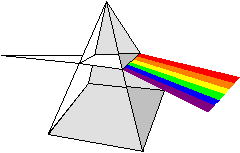|

Have a
question or comment?
|
|
|
|
Background
|
Teachers need multiple ways to engage students in their
literature studies. This process provides a path
to use science as an
extension of opportunities for
literature and
to engage students across learning disciplines
in a more effective way.
The process begins with
literature, such as fairy tales, starting in the lower
grades, and leading to more sophisticated stories at
older ages – stories that engage students. Using the
engineering
design process & skillful thinking questions,
PreK-5
teachers can create motivating questions that will give
students the opportunity to probe, poke and peek into
the mysteries of science & mathematics while doing an
engineering project.
|
Expected outcomes:
Teachers: Have an understanding of the
roles engineers provide in society and their contribution. Be able
to use the design process for connecting literature with
mathematics and science. Use skillful thinking and questions
within their learning process. Create life long learners
in their students.
PreK-5 students: When entering the
6th grade, they see learning as an
exciting adventure and the relevance of mathematics, science and
engineering in their lives. Learn to work in a team and be able
to contribute content knowledge required of that activity. Be
comfortable in using questions in their lives.
It all centers
around the definitions:
-
Engineering
is about designing useful products &
processes to make life better using science & mathematics.
-
Science is
about explaining patterns in the universe.
-
Mathematics
is the language to manage a design & account
for the patterns in nature.
|
|
|
Benefits:
Invites the incorporation of
instructional technology into the curriculum.
Engineering is differentiated:
offers an "in" for learners of all types .
Rich cross-curricular possibilities.
Integration with math is an important
way to show students how and why math is relevant
and useful in the world.
Directly connected with improvement
of living conditions/safety/health and welfare of
people.
Engages both students and teachers
in an exciting learning process.
|
|
Overview of the
program being proposed |
|
|
Why use
literature ?
-
Literature is an integral part of all existing school
curriculum.
-
Stories have the
potential to present situations that can challenge children’s
imagination.
-
Stories can
serve to encourage students to begin to generate design
proposals and connect to STEM ( science, technology,
engineering, mathematics )
-
Literature
is an area of the curriculum that all teachers are familiar
with and, thus, the design process can start from a position of
strength within the classroom.
-
Building on
children’s strength.
|
|
Engineering & skillful
thinking focus: |
| We are teaching the students about the
engineering
profession and the process of
engineering
design.
We are not teaching engineering but the
thinking process that underlines engineering With this background, they can apply it to many inquiry based
activities in designing new products or processes. As part
of the engineering method, they are taught about
skilful
thinking, collaboration, "to
fail often to succeed" and
rubrics
to measure their success
and
learning. (see
example). Once a theme is developed
for an activity, both the appropriate mathematics and science framework items can we woven into the story. |
|
|
|
| |
| What others are saying: |
|
|
| |
|







